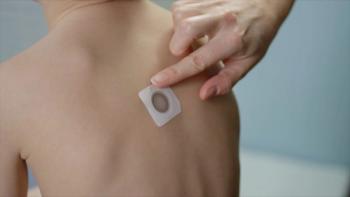
- Vol 37 No 4
- Volume 37
- Issue 4
AAP issues recommendations for Williams syndrome
The American Academy of Pediatrics’ (American Academy of Pediatrics) newly issued recommendations for supervising the health care of children with Williams syndrome are based on a review of the current literature along with the consensus of physicians and psychologists with expertise in managing this condition, which is caused by a deletion of part of chromosome 7.
The American Academy of Pediatrics’ (AAP) newly issued recommendations for supervising the health care of children with Williams syndrome (WS) are based on a review of the current literature along with the consensus of physicians and psychologists with expertise in managing this condition, which is caused by a deletion of part of chromosome 7.
The recommendations note that the pediatrician can use knowledge of the clinical manifestations and the natural history of WS to anticipate medical problems and to educate the patient’s family. To aid the pediatrician in doing so, the recommendations include a time line indicating the tests, evaluations, and anticipatory guidance the practitioner should provide at diagnosis through adulthood, a reflection of how WS affects various organ systems at different ages.
Also included are discussions of how to address some of the specific problems associated with WS, such as cardiovascular anomalies; hypercalcemia; gastrointestinal problems; genitourinary abnormalities; neurologic, developmental, cognitive, and behavioral problems; ocular and auditory difficulties; dental problems; and endocrine functions (
Thoughts from Dr. Farber
Every practicing pediatrician should be familiar with this article and similar ones published by the AAP on other conditions (eg, trisomy 21, neurofibromatosis). I recommend downloading these articles into the medical record of relevant patients to have them ready to consult (especially the time line) during visits.
Articles in this issue
over 5 years ago
Toddler’s unusual oral trauma is troublingover 5 years ago
How to diagnose shoulder injuries in young athletesover 5 years ago
Vaping and electronic cigarette use in the pediatric populationover 5 years ago
Progressive plaque in a 9-year-old boyover 5 years ago
SGA treatment raises risk of metabolic disturbancesover 5 years ago
Ondansetron is effective for acute migrainealmost 6 years ago
COVID-19: Thoughts while circling the wagonsalmost 6 years ago
New food course builds healthy relationships with foodalmost 6 years ago
Hexavalent vaccine added to Vaccines for Children programalmost 6 years ago
Cool running water is best immediate treatment for burnsNewsletter
Access practical, evidence-based guidance to support better care for our youngest patients. Join our email list for the latest clinical updates.






